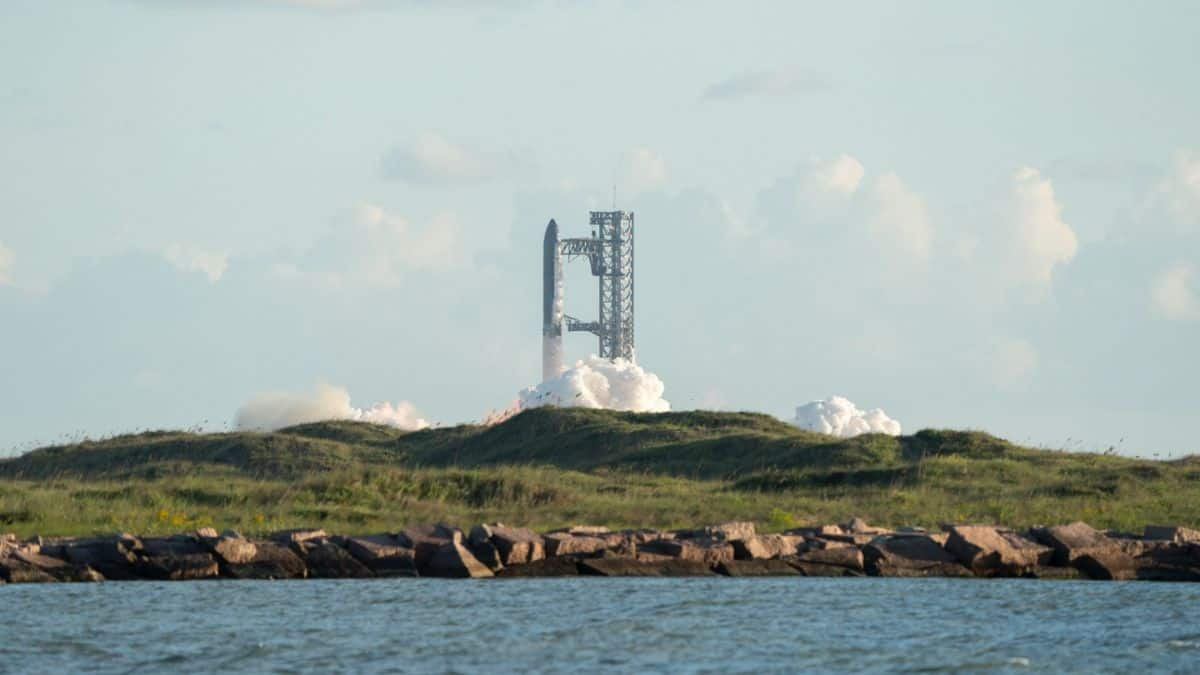Starship's Eleventh Flight
The recent Starship mission, launched on October 13, 2025, from SpaceX's Starbase, marked the eleventh flight of the rocket. This launch was a crucial
step in validating the Starship's design for reusability, particularly for future satellite deployment and human missions to the moon and Mars. The launch included the Starship upper stage atop the Super Heavy booster, which took off around 7:20 p.m. ET. A key highlight of the flight was the Super Heavy booster's soft water landing in the Gulf of Mexico, approximately 10 minutes after the launch. This successful outcome, building on the August mission, demonstrated progress toward complete reusability.
Reusability Testing Goals
The main focus of the launch was to test the rocket's ability to be reused, a significant goal of SpaceX. This test flight followed a streak of unsuccessful attempts earlier in the year. The company aimed to stress-test various features to prove Starship's design's total reusability. SpaceX had previously mentioned its efforts to ensure the next test flight was successful. SpaceX President Gwynne Shotwell acknowledged that challenges could still arise during the mission. The successful demonstration of the Super Heavy's soft water landing validated the recovery strategy of the booster. This mission further included sending the Starship stage into space and testing the heat shield tiles during re-entry into Earth's atmosphere, as the rocket was expected to reach the Indian Ocean.
Moon and Mars Missions
With the success of the eleventh launch, SpaceX intends to use the Starship for more ambitious undertakings. The company is working towards using a more advanced Starship prototype, packed with features necessary for lunar and Martian missions. This is a considerable step towards SpaceX's long-term vision. The company aims to launch Starship rockets for further development and utilization in space exploration and the transportation of people. These endeavors are part of the company's commitment to facilitate human presence on the moon and Mars and to further scientific research in outer space. These forthcoming missions highlight SpaceX's commitment to exploring and colonizing space.
Starlink Deployment
In addition to testing the reusability and design of the Starship rocket, the mission's scope included the deployment of a new cluster of Starlink satellites. The goal was to position a second cluster of dummy Starlink satellites in space. This satellite deployment is critical for expanding the Starlink network, which is designed to provide internet access globally. This mission integrated the Starship's launch capability with a commercial endeavor. SpaceX's strategy merges technological advancements with the objectives of commercial operations, and the Starlink deployment highlights this synergy. Deploying the satellites also gives an opportunity to test communications capabilities to and from the rocket during its mission.
Atmospheric Re-entry
The mission incorporated critical testing of the Starship's ability to survive the stresses of atmospheric re-entry. The rocket would blaze back through Earth's atmosphere and reach the Indian Ocean, exposing the heat shield to extreme conditions. The advanced heat shield tiles on the Starship's exterior would undergo testing, as they encountered super-hot plasma. This testing phase is vital to ensuring the safety of the Starship as it moves through its journey back to Earth from space. The re-entry phase evaluates the materials' effectiveness and the rocket's structural integrity. This test would provide important data about the thermal performance of the Starship during high-speed re-entry.




